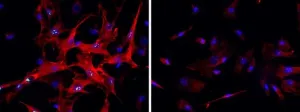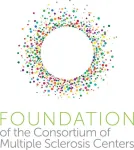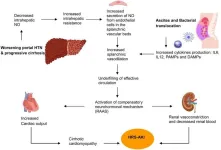(Press-News.org) New research from the University of Pittsburgh School of Pharmacy sheds light on the processes that lead to liver fibrosis and suggests a novel treatment approach for this common and serious condition.
Led by senior author Wen Xie, M.D., Ph.D., professor and Joseph Koslow endowed chair of the Department of Pharmaceutical Sciences and co-first authors Hung-Chun Tung, graduate student, and Jong-Won Kim, Ph.D., postdoctoral fellow, the study published today in Science Translational Medicine.
In this Q&A, Xie elaborates on the study’s findings and explains why new diagnostic tools and treatment options for liver fibrosis are greatly needed.
What is liver fibrosis and who is at risk?
Liver fibrosis is the formation of tissue scars in the liver due to chronic inflammation and injury. Over time, fibrosis can impair liver function and may lead to cirrhosis or even liver cancer. Those at risk include individuals with chronic viral hepatitis, obesity, diabetes and excessive alcohol use. Early detection and intervention are crucial to prevent progression to more severe liver disease.
What are the current treatments for liver fibrosis?
Currently there are no FDA-approved drugs that specifically treat liver fibrosis. The only treatment option is to treat diseases that cause liver fibrosis in the first place, such as hepatitis, obesity, type 2 diabetes and alcoholic liver disease. Preventive measures include avoiding excessive alcohol, maintaining a healthy body weight and early screening for liver diseases to prevent fibrosis from advancing to cirrhosis or liver failure.
What are hepatic stellate cells (HSCs), and how do they contribute to liver fibrosis?
HSCs are a unique cell type in the liver. When the liver is injured or inflamed, HSCs become activated and produce excess collagen and other extracellular matrix proteins. The accumulation of collagen and other extracellular matrix proteins leads to scar tissue formation and liver fibrosis.
What were the main findings of this study?
This study identified the enzyme CYP1B1 as a biomarker and predictor of HSC activation and liver fibrosis in both patients and mice. Inhibition of CYP1B1 led to the accumulation of a sugar called trehalose, which we showed for the first time that trehalose has anti-fibrotic activity. Moreover, treatment of mice with trehalose, its analog lactotrehalose or CYP1B1 inhibitor protected mice from getting liver fibrosis.
It was surprising to identify a liver function of CYP1B1, an enzyme traditionally known for its functions outside the liver. Although the concentration of CYP1B1 in the whole liver is not high, this enzyme is uniquely and abundantly present in HSCs and thus plays an important role in HSC activation and liver fibrosis.
What are the clinical implications of these findings?
Liver fibrosis is a common, potentially deadly and costly liver disease that lacks FDA-approved drugs. Our findings are clinically important because we identified CYP1B1 as a predictor of HSC and liver fibrosis in patients, which may help with the early diagnosis of this disease. More importantly, we found that trehalose and lactotrehalose are potential novel drugs that could be used to treat liver fibrosis in the future.
What’s next for this research?
Future and more comprehensive human studies are needed to confirm the role of CYP1B1 in human liver fibrosis. The utility of trehalose or lactotrehalose in the treatment of human liver fibrosis also warrants future studies.
Other authors on the study are listed in the manuscript online.
This work was supported in part by grants from the National Institute of Diabetes and Digestive and Kidney Diseases and the National Institute of Environmental Health Sciences.
END
Pitt study identifies potential new treatment for liver fibrosis
2024-09-25
ELSE PRESS RELEASES FROM THIS DATE:
Hardest hit by heat
2024-09-25
Each passing year, climate change drives summer temperatures to new extremes, with heat records being shattered one after another. In a new study, scientists from the Max Planck Institute for Demographic Research (MPIDR) have examined how extreme temperatures in the US affect the mortality of people from different racial groups. Risto Conte Keivabu, Ugofilippo Basellini, and Emilio Zagheni (director of MPIDR) analyzed data from 1993 to 2005 and examined racial differences in temperature-related deaths. The study found that both extreme cold (temperatures in the coldest 5%) and extreme heat (temperatures in the hottest 5%) increase mortality rates, with heat disproportionate impacting ...
Pigs may be transmission route of rat hepatitis E to humans
2024-09-25
COLUMBUS, Ohio – New research suggests that pigs may function as a transmission vehicle for a strain of the hepatitis E virus (HEV) common in rats that has recently been found to infect humans.
The Rocahepevirus ratti strain is called “rat HEV” because rats are the primary reservoir of the virus. Since the first human case was reported in a person with a suppressed immune system in Hong Kong in 2018, at least 20 total human cases have been reported – including in people with normal immune function.
People infected with rat HEV did not report exposure to rats, leaving the cause of infection undefined. ...
The Foundation of Consortium of Multiple Sclerosis Centers (FCMSC) receives $100,000 gift for the June Halper MS Nursing Scholarship Fund
2024-09-25
(Hackensack, NJ, September 2024) The Foundation of the Consortium of Multiple Sclerosis Centers (FCMSC) recently received a generous donation of $100,000 from EMD Serono Inc., in honor of June Halper, MSN, APN-C, FAAN, MSCN. Ms. Halper a longtime pioneer in the comprehensive care movement for multiple sclerosis (MS), and leading nurse practitioner and MS advocate, passed away on July 24, 2024, at the age of 86, working until her final days as CEO of the CMSC, FCMSC and IOMSN (International Organization of MS Nurses).
Since 1978, Ms. ...
Effects of transjugular intrahepatic portosystemic shunt on renal and pulmonary function in hepatic decompensation with and without hepatorenal and hepatopulmonary syndromes
2024-09-25
Cirrhosis is one of the leading causes of mortality from non-communicable diseases, with complications arising as liver function deteriorates. HRS and HPS represent the most severe outcomes of cirrhosis, associated with systemic vasodilation driven by elevated levels of vasodilators like nitric oxide (NO). These complications significantly impair renal and pulmonary functions, leading to high mortality rates. TIPS, by shunting blood from the portal to systemic circulation, can potentially improve renal function by increasing systemic blood volume. However, the diversion of NO through TIPS could exacerbate systemic hypotension, posing a risk to renal ...
Encoding human experience: Study reveals how brain cells compute the flow of time
2024-09-25
A landmark study led by UCLA Health has begun to unravel one of the fundamental mysteries in neuroscience – how the human brain encodes and makes sense of the flow of time and experiences.
The study, published in the journal Nature, directly recorded the activity of individual neurons in humans and found specific types of brain cells fired in a way that mostly mirrored the order and structure of a person’s experience. They found the brain retains these unique firing patterns after the experience is concluded and can rapidly replay them while at rest. Furthermore, the brain is also able to utilize these learned patterns to ready itself for future stimuli following that experience. ...
New study: Deep-sea discovery shines light on life in the twilight zone
2024-09-25
TAMPA, Fla. (Sept. 23, 2024) – The ocean’s twilight zone is deep, dark, and — according to new research — iron deficient.
No sunlight reaches this region 200 to 1,000 meters below the sea surface, where levels of iron, a key micronutrient, are so low that the growth of bacteria is restricted. To compensate, these bacteria produce molecules called siderophores, which help the bacteria scavenge trace amounts of iron from the surrounding seawater.
The paper detailing these unexpected findings from the Pacific Ocean will publish on Wednesday, Sept. 25, at 11 a.m. ET (4 p.m. London Time) in Nature, and will be viewable at that time at this link. The ...
Brazilian fossils reveal jaw-dropping discovery in mammal evolution
2024-09-25
These fossils, belonging to the mammal-precursor species Brasilodon quadrangularis and Riograndia guaibensis, offer critical insights into the development of the mammalian jaw and middle ear, revealing evolutionary experiments that occurred millions of years earlier than previously thought.
Mammals stand out among vertebrates for their distinct jaw structure and the presence of three middle ear bones. This transition from earlier vertebrates, which had a single middle ear bone, has long fascinated scientists. The new study explores how mammal ancestors, known as cynodonts, evolved these features ...
Now we know why children with Down’s syndrome have higher risk of Leukemia
2024-09-25
People with Down’s syndrome face a higher risk of developing Leukemia. Now researchers from the University of Copenhagen and Stanford University explain why, by identifying specific changes in blood cells of people with Down’s syndrome.
In the world, one out of 700 children are born with Down’s syndrome. A syndrome, where the child has an extra copy of chromosome 21, resulting in 47 chromosomes instead of 46. This typically results in characteristic physical features and some level of learning disability.
But newborns with Downs syndrome also tend to have an elevated number of red blood ...
Emerging SARS-CoV-2 resistance after antiviral treatment
2024-09-25
About The Study: Treatment-emergent nirmatrelvir resistance mutations were commonly detected, especially in individuals who were immunosuppressed in this cohort study of 156 participants. However, these mutations were generally present at low frequencies and were transient in nature, suggesting a low risk for the spread of nirmatrelvir resistance in the community with the current variants and drug usage patterns.
Corresponding Author: To contact the corresponding author, Jonathan Z. Li, MD, MMsc, email jli@bwh.harvard.edu.
To access the embargoed study: Visit ...
Semaglutide and opioid overdose risk in patients with type 2 diabetes and opioid use disorder
2024-09-25
About The Study: In this study, semaglutide was associated with reduced opioid overdose risk in patients with comorbid type 2 diabetes and opioid use disorder, suggesting its potential therapeutic value for preventing overdoses. The results need validation from other data resources and study populations. Further research is warranted to investigate the underlying mechanisms and randomized clinical trials are necessary to corroborate the clinical effects on opioid use disorder.
Corresponding Authors: To contact the corresponding authors, email Rong Xu, PhD, (rxx@case.edu) ...






